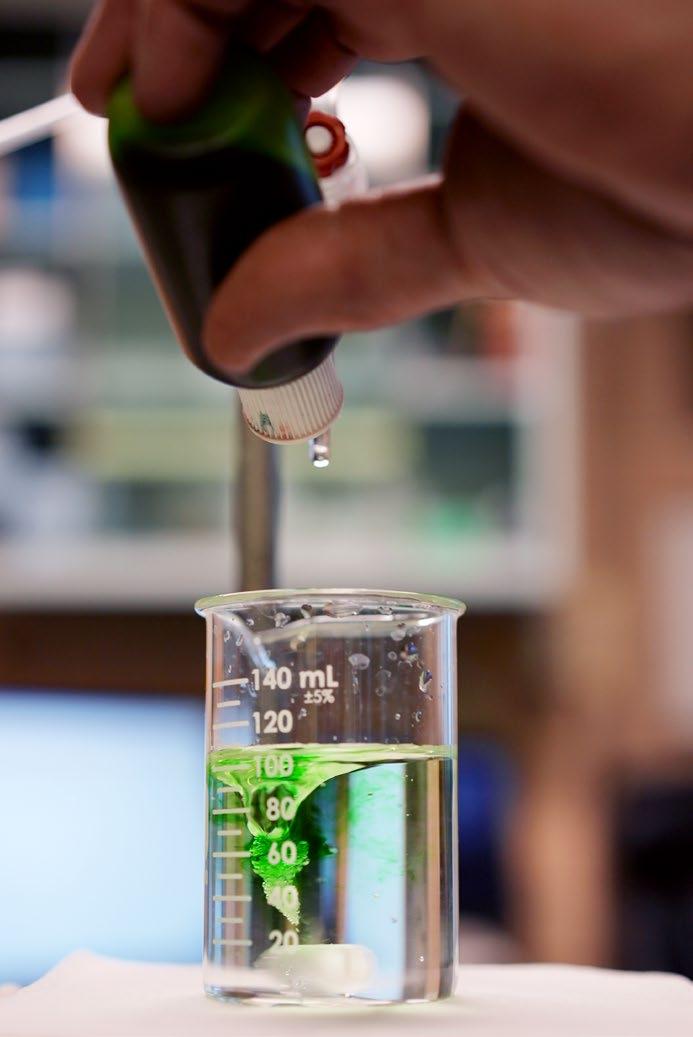
4 minute read
From the Well to Where You Dwell
Before you take a sip of water, it probably doesn’t cross your mind where it came from and how it got to your tap. It’s easy to just flip on the faucet and let it flow.
That’s because behind the scenes there are several wells pulling water from our natural aquifers, dozens of City staff testing and treating for impurities, and countless miles of water mains and infrastructure to deliver it to your home, taking the worry out of water for you.
Advertisement
In Dubuque, water is supplied by natural aquifers, or layers of permeable ground beneath our feet that hold water.
Specifically, the aquifers from which Dubuque’s water originates are the Jordan Aquifer, the Mt. Simon Aquifer, and the Apple-Plum Alluvial Aquifer. Aquifers are where our water starts, in its rawest form.
Well systems then pull untreated water from the underground aquifers above ground for our use. Of the nine wells Dubuque currently uses for our city’s water supply, there are four deep wells (1,000 feet –1,800 feet deep), and five shallow wells (200 feet deep.)
100 gallons
of City water costs only $0.55
compared to 100 gallons
of bottled water (20 oz. at $1.79 each) costs over $1,100!
The City’s well system directs untreated source water to Dubuque’s Eagle Point Treatment Plant where it undergoes several treatment processes:
1. The first of these treatment processes is aeration where untreated water is cascaded through a series of trays, aerating the water which promotes the exchange of gases. Aeration is similar to the natural process that occurs when a stream flows through rapids or over falls and unwanted gases are removed. 2. A flocculant aid is added to force small particles to clump together and settle out, improving the clarity of the water. 3. Lime (or calcium oxide) is then added to soften or reduce the minerals that typically make water hard. Excessive hardness in water creates residue, increases deposits in water heaters and boilers, interferes with some industrial processes, and sometimes gives water an unappealing taste and odor. 4. The addition of lime increases the pH, or acidity of the water. Next, to stabilize the water’s acidity, carbon dioxide must be added to lower the pH. 5. The water is then passed through a sand and gravel filter, removing any remaining matter. 6. Next, chlorine is added to disinfect the water and ensures safety by destroying disease-causing organisms. 7. Fluoride is then added at a miniscule level to help prevent tooth decay. 8. Finally, phosphate is added to chemically stabilize the water and decrease the possibility that lead and copper will leach out of pipes and into tap water.
Lead & Copper Sampling Program
Lead and copper can enter drinking water primarily from materials used in service lines and home plumbing. The City of Dubuque Water Department is responsible for providing high quality drinking water, but cannot control the materials used in home plumbing. That’s why the City adds protective phosphate to our water and conducts an annual lead and copper sampling program to monitor drinking water at customer taps.
From the Well to Where You Dwell
Creating safe drinking water doesn’t stop with the treatment process. Our city’s water is tested frequently and at various points in the distribution system to ensure it’s safe for consumption. Over 200 tests a day are performed at the Eagle Point Water Treatment Facility to make sure the City’s treatment and delivery process produces safe water. Additionally, 70 bacterial samples are collected throughout the distribution system monthly and tested. The U.S. Environmental Protection Agency (EPA) regulates drinking water quality in public water systems and the tests Dubuque performs assure our water meets all state and federal drinking water quality requirements. After being treated, tested, and made ready for use, our city’s water is distributed to homes, businesses, schools, and more through a system of 330 miles of water mains. Water mains are large pipes that run under our roads and connect to smaller water service lines that bring water into individual buildings. Over 6 million gallons are treated per day and distributed for customer use in Dubuque.

Excess treated water is stored in tanks and water towers to be used at peak demand times, like mornings when everyone in the city is brushing their teeth, taking a shower, and making a pot of coffee. Water towers also provide improved water pressure without the need for pumps by elevating the water high above the pipes that lead to your home and letting gravity do the work of pushing it there.

Roosevelt Street Water Tower
Completed in 2020, the 1.25-million gallon elevated tower, along with distribution improvements, increased water pressure to customers in and around the Roosevelt Street and Peru Road area.
The next time you turn on the faucet, you’ll know exactly where your water comes from and the infrastructure needed to supply your home with every satisfying sip of water.










